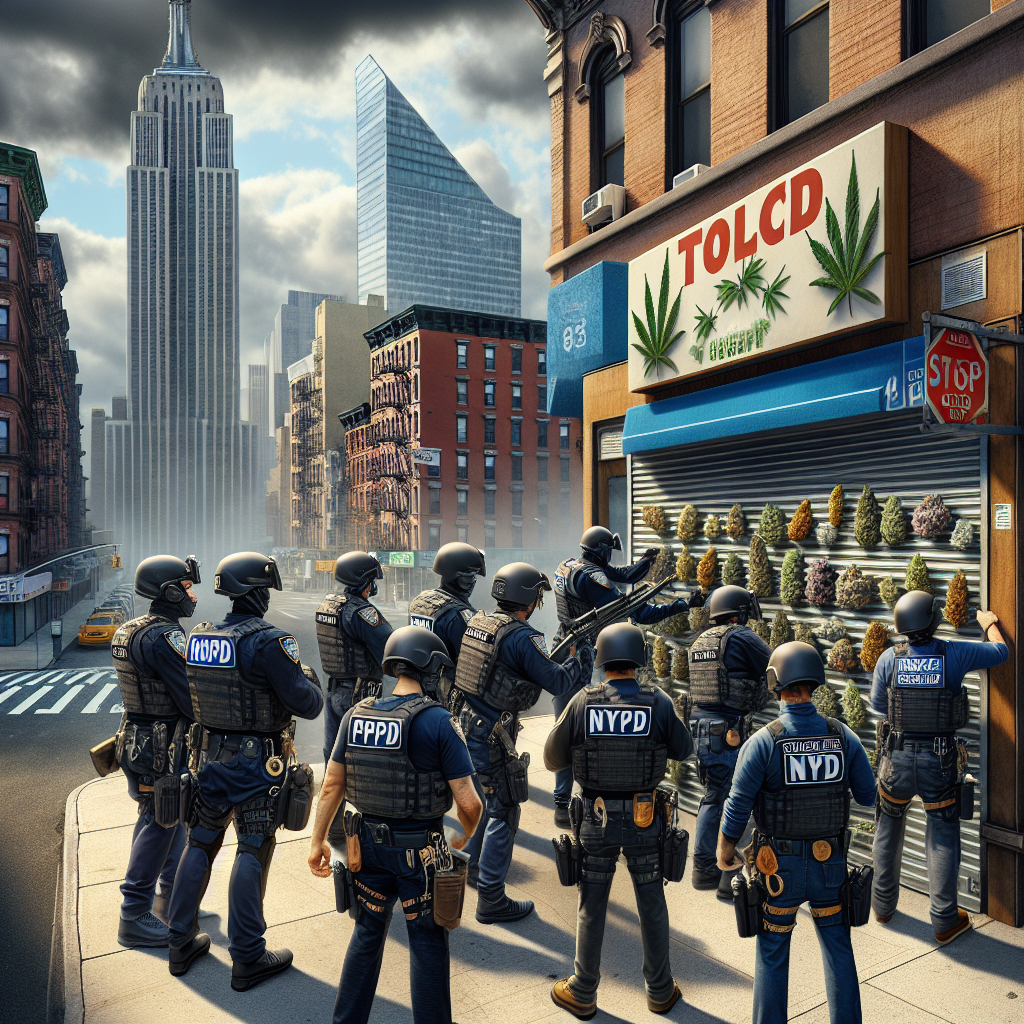
NYPD Increases Action Against Illegal Cannabis Market
The NYPD, and NYC Sheriff’s Office Intensify Crackdown on Illegal Cannabis Shops
New York City’s fight against illegal cannabis operations has intensified, with Mayor Eric Adams leading a multi-agency crackdown, shutting down over 750 unofficial dispensaries. This operation, known as ‘Operation Padlock to Protect’, targets shops near sensitive areas like schools and religious institutions.
The sweep, characterized by its rapid execution, has resulted in the closure of 779 stores and the imposition of $65 million in fines. An estimated $41 million worth of illicit products were seized in operations that extended across all five boroughs. Mayor Adams cites the enforcement as a crucial step in re-establishing order and safety in the community, deterring illegal activities linked to these shops, such as targeted sales of counterfeit products resembling candy to minors.
Further details from the official press release can be viewed at NYC Mayor’s Office.
State and City Legislation Enhances Enforcement Capabilities
New legislations have empowered local authorities like the NYC Sheriff’s Office to take decisive actions. Notably, these laws streamline the process of padlocking stores, a measure critical in preventing the reopening of these establishments. This legislative support, as confirmed by AP News, has been pivotal.
The enforcement strategy not only curbs illegal sales but also supports the burgeoning legal cannabis market in NYC, protecting legal businesses from unfair competition.
Community Impact and Responses
As per reports from ABC7 New York, the crackdown has significantly disrupted the operation of illegal cannabis markets, fostering a safer environment. This success is attributed to the rigorous enforcement of new state laws that were enacted in April, focusing heavily on community safety and economic stability.
Heightened enforcement has led to a substantial number of illegal cannabis outlets staying closed after being shut down, reducing the proliferation of these establishments. The operations have also encouraged feedback and cooperation from the community, ensuring sustained vigilance against any resurgence of illegal activity.
Conclusion
The collective efforts of state legislation, city officials, and law enforcement have marked a new era in the regulation of cannabis, emphasizing public health, safety, and economic fairness under the regulated market framework.

